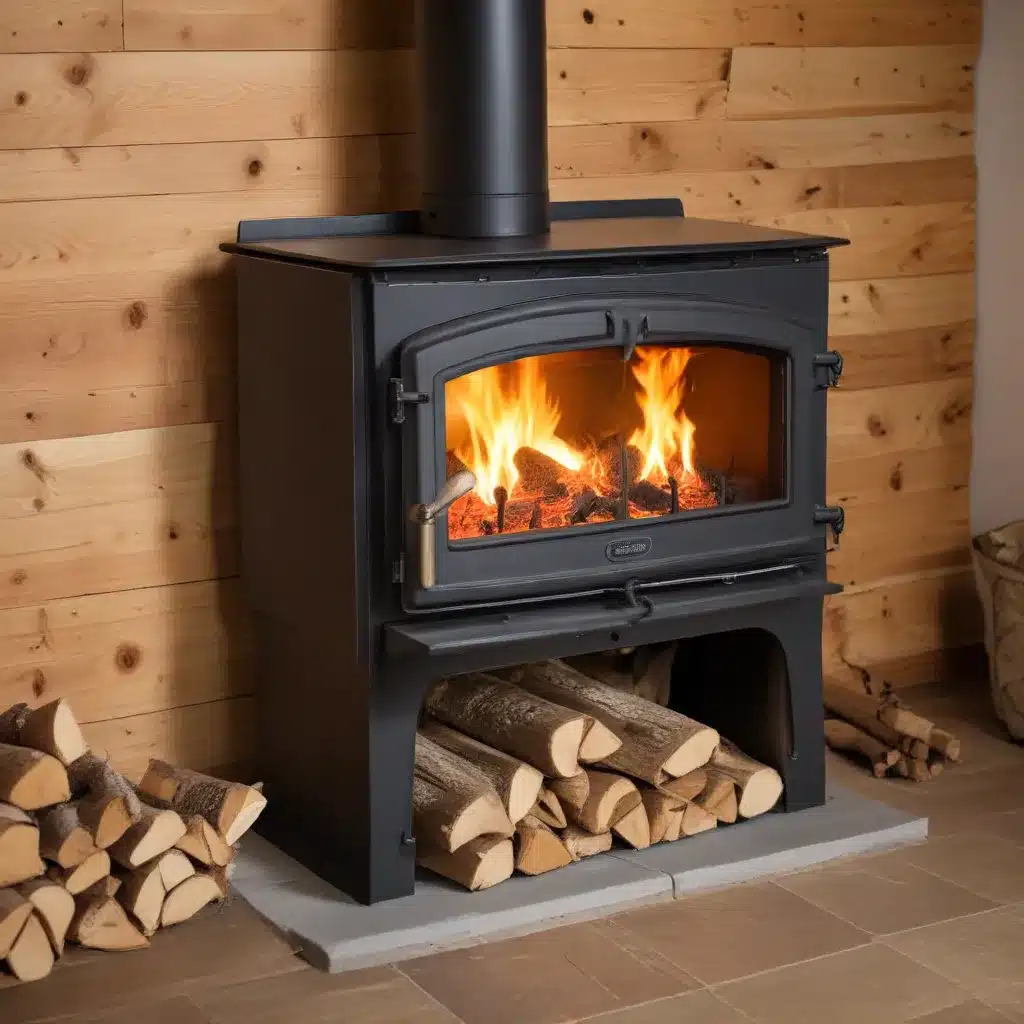
The Timeless Appeal of Wood Stoves
Wood stoves have long held a cherished place in the hearts and homes of those seeking reliable, sustainable, and cozy heating solutions. From the crackle of the flames to the radiant warmth they provide, these time-honored appliances continue to captivate homeowners, especially in regions with harsh winters. As an expert in the field of wood stoves and heating systems, I’m excited to share practical tips and in-depth insights to help you maximize the potential of your wood stove and achieve winter warmth that’s both efficient and environmentally responsible.
Understanding the Science of Wood Burning
At the heart of any wood stove’s performance lies the art of fuel loading. The type of wood, moisture content, and stacking technique all play a crucial role in achieving optimal heat output and efficiency. Hardwoods like oak, maple, and birch tend to burn hotter and longer than softwoods, providing a more consistent and sustained heat output. Ensuring your firewood is properly seasoned, with a moisture content below 20%, is essential for maximizing the stove’s efficiency and minimizing creosote buildup in the chimney.
When it comes to stacking the wood, the orientation and arrangement of the logs can significantly impact the burn. Placing the logs in a crisscross or “log cabin” pattern allows for better air flow, resulting in a more complete and efficient combustion. Avoid simply piling the wood on top of each other, as this can restrict airflow and lead to incomplete burning, reduced heat output, and increased emissions.
Mastering the Art of Fuel Loading
To truly harness the power of your wood stove, it’s crucial to develop a systematic approach to fuel loading. Begin by starting with a clean, well-maintained stove and a proper bed of hot coals. Introduce smaller, drier kindling pieces first, allowing the fire to establish a strong base before adding larger logs.
When adding the main fuel load, start by placing the largest logs at the back of the firebox, working your way forward with progressively smaller pieces. This arrangement helps to create a “thermal gradient,” with the larger logs at the back burning slowly and steadily, while the smaller pieces at the front ignite more quickly to maintain a consistent, lively flame.
Resist the temptation to overload the stove, as this can lead to excessive smoke, incomplete combustion, and reduced efficiency. Instead, focus on adding just the right amount of fuel to sustain the desired heat output without smothering the fire. Experiment with different loading techniques and observe how your stove responds, adjusting the quantity and arrangement as needed.
Maintaining Optimal Airflow
Proper air control is essential for achieving a clean, efficient burn in your wood stove. Most models come equipped with primary and secondary air vents, each serving a specific purpose. The primary air inlet provides the oxygen necessary for the initial ignition and combustion, while the secondary air helps to re-burn the volatile gases and particulates, resulting in a cleaner, hotter burn.
Familiarize yourself with your stove’s air control system and learn to balance the primary and secondary air inlets to maintain the desired flame pattern and heat output. As a general rule, start with the primary air fully open and the secondary air partially open, then gradually adjust as needed to achieve the optimal burn. Monitoring the flame and smoke patterns can provide valuable clues about the stove’s air flow and combustion efficiency.
Embracing Sustainability and Efficiency
In an era of heightened environmental awareness, the choice to heat with wood carries both benefits and responsibilities. While wood is a renewable resource, improper burning techniques can lead to increased particulate emissions and air pollution. By mastering the art of fuel loading and maintaining optimal airflow, you can dramatically improve the efficiency and environmental impact of your wood stove.
Look for opportunities to source your firewood from sustainably managed forests or local suppliers who prioritize responsible harvesting practices. Avoid burning any treated or painted wood, as these can release toxic chemicals into the air. Instead, focus on seasoned, untreated hardwoods for the cleanest, most efficient burn.
Maintaining Your Wood Stove for Peak Performance
Regular maintenance is key to ensuring your wood stove operates at its best for years to come. Diligently clean the interior, remove ash buildup, and inspect the gaskets and door seals to maintain a tight seal. Annually, have a professional chimney sweep service your stove’s flue to remove creosote deposits and ensure proper airflow.
By taking the time to understand the science of wood burning, master the art of fuel loading, and maintain your wood stove with care, you’ll be rewarded with a reliable, efficient, and environmentally friendly heating source that will keep you and your family cozy all winter long.
Conclusion: Embracing the Warmth and Wisdom of Wood Stoves
Wood stoves offer a unique blend of timeless appeal, sustainable heating, and the satisfaction of hands-on involvement in your home’s comfort. By applying the principles outlined in this article, you’ll be well on your way to maximizing the potential of your wood stove and enjoying the unparalleled warmth and ambiance it provides. Embrace the art of fuel loading, maintain your stove diligently, and take pride in your role as a responsible steward of this renewable heating solution. Here’s to a winter filled with the crackle of the flames and the radiant comfort of your wood stove.


